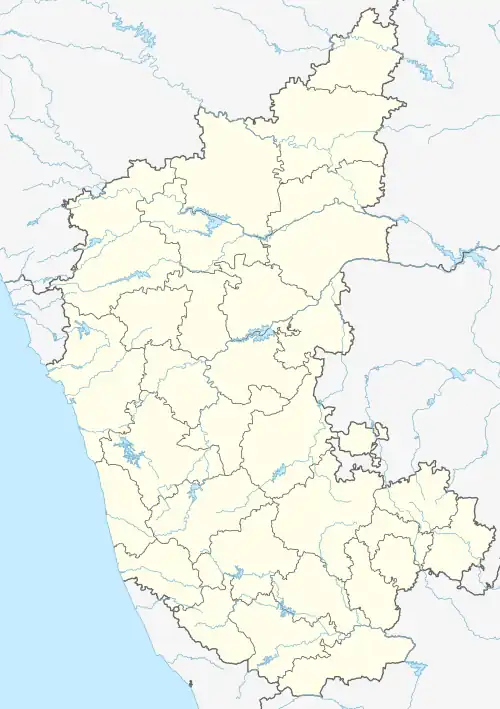Kallur archaeological site
Kallur is an archaeological site and village located in the Manvi taluk of Raichur district in the state of Karnataka, India.[1] It belongs to Gulbarga division. The site came into prominence with the discovery of antennae swords in the 1930s, which was the first instance of the Copper Hoard culture being discovered in South India.[1] The earliest finding here has been dated to the Neolithic period.
Kallur archaeological site | |
|---|---|
Village | |
 Kallur archaeological site | |
| Coordinates: 16°8′23.54″N 77°12′17.47″E | |
| Country | |
| State | Karnataka |
| District | Raichur district |
| Taluk | Manvi |
| Founded by | Anil kumar M |
| Government | |
| • Type | Panchayati raj |
| • Body | Gram panchayat |
| Population (2001) | |
| • Total | 10,447 |
| Demonym | kallurigaru |
| Languages | |
| • Official | Kannada |
| Time zone | UTC+5:30 (IST) |
| PIN | 584118 |
| Telephone code | 08538 |
| ISO 3166 code | IN-KA |
| Vehicle registration | KA-36 |
| Website | karnataka |
Etymology
The word Kallur is formed from two Kannada words: kallu which means "stone" and ooru which means "town". The number of granite hillocks that surround Kallur, may have given the place its name.[1] Some of the hillocks that are present here are Yammigudda, Pirbannur, Agsargudda, Kampangudda and Polannagudda.
Excavation history
The site was first excavated in 1939–40 by M. Khwaja Ahmed of the Archaeological Department of Hyderabad state. It was later explored by F. Raymond Allchin in 1952.[2]
Findings
Swords
Villagers living around Kallur discovered three antennaed swords under a boulder on Pirbannur hillock in the 1930s. The swords were made of cast copper with the longest sword being 38+1⁄2 inches (98 cm) in length and the shortest sword being 26+3⁄4 inches (68 cm) in length. The antennae of these swords was about 6–7 cm in length.[2] These swords are similar to the ones found in the sites of Copper Hoard culture in North India, like Fatehgarh, and hence provide the first instance of such a site being found in South India.[1][3] Robert von Heine-Geldern postulated that these swords were influenced by the Koban culture, but the Indian archaeologist B. B. Lal disagreed.[4][5]
Paintings
On the Yammigudda hillock; buffaloes, miniature bulls and a man have been found painted over a rock face. Russet-coated painted ware have also been found here.[1]
Objects
Other objects found here include cores of chert, jasper and chalcedony, stone axes, red ware, shell bangles and beads of semi precious stones. Presence of iron ore and quartzite provide the evidence that iron smelting in a crude form was performed here. Coins of the Satavahana period have also been found here.[1]
Notes
- Amalananda Ghosh (1990), p197
- F. R. Allchin (1979), p113
- M. L. K. Murty (2003), p91
- Amalananda Ghosh (1990), p351
- Malati J. Shendge (2003), p. 169
References
- Ghosh, Amalananda (1990) [1990]. An Encyclopaedia of Indian Archaeology. BRILL. ISBN 90-04-09262-5.
- Allchin, F. R. (1979) [1979]. "A South Indian Copper Sword and its significance". In Johanna Engelberta, Lohuizen-De Leeuw (ed.). South Asian Archaeology 1975: Papers from the Third International. BRILL. ISBN 90-04-05996-2.
- Murty, M. L. K. (2003) [2003]. Pre- and Protohistoric Andhra Pradesh Up to 500 B.C. Orient Longman. ISBN 81-250-2475-1.
- Shendge, Malati J. (2003) [2003]. The Civilized Demons: The Harappans in Rigveda. Abhinav Publications. ISBN 81-7017-064-8.